Our way of life has been significantly changed as a consequence of the ongoing Coronavirus pandemic. We have been forced from our offices, and schools, and into our homes – locked down and unable to venture far from where we live. Some experts theorise that a few of these changes will be long-lasting, so we will take a look at the evidence and explore how retailers and designers might need to adapt…
Zoom conferences, phone calls with kids making noise in the background, the dining table as an office desk. These scenes have become very familiar to the thousands of UK workers who have been forced to work from home due to the Coronavirus pandemic.
This way of living is now being referred to as “the new normal” and it’s possible that, even when the virus eventually is a thing of the past, many people will prefer to continue to work from home and that the way that we live may be changed for good.
The way we work isn’t the only thing that’s changed. Because people are not necessarily needing to commute into the office, they are instead looking to move to suburban and rural areas, with more space, away from the throng of the city. In addition, the way that we organise our homes is also potentially going to change, with a move away from open plan towards something more zonal and separated.
There is a mounting body of evidence to back up these ideas, with perhaps the most compelling, coming from leading architect and lecturer in architecture at Northumbria University, Dr Tara Hipwood.
She argues that changes in commuting and work habits will prompt a fundamental shift in what people perceive as priority features in the home, with outdoor space and a home office high up the list in future.
Currently, she explains, we tend to organise our homes around a ‘phased’ pattern of occupation, meaning that the same space can be used for different purposes at different times of the day, depending on who is home.
So, if kids are at school mum or dad can work from a desk in the open plan kitchen with little interruption. And when the kids get home, they can use the same space for completing homework while mum or dad gets on with something else.
However, as a consequence of lockdown, where schools were closed, we are shifting into more ‘concurrent’ patterns of occupation, meaning that everyone in the household is fighting for the same space, at the same time.
Open plan no more?
In this scenario, the open plan dream becomes less of a dream and more of a nightmare, and a more zonal and separated approach will potentially be preferable, depending on your lifestyle and the job you do. In addition, those unused to working from home may wish to replicate an office arrangement as much as possible, and a private, separate working space could be entirely necessary.
And even though schools right now remain open, there is much uncertainty that this will continue at least in the short term while the virus is still a prevalent threat, and so it makes sense to plan a possible period of the kids being off school and at home.
With people occupying the home much more, Hipwood also argues that the energy efficiency and thermal properties of the home will become much more important. If you’re going to be at home all day, you don’t necessarily want to have the heating on all day and face rocketing energy bills! So, we may see more homeowners opting for triple-glazing or high-performance windows, increased insulation and draught-proofing – which would also lead to reduced CO2 emissions.
Health and wellness will also be a priority for those stuck at home more than normal and unable to visit health spas or gyms. As a consequence, we are also likely to see more domestic spaces dedicated to getting a decent workout, or multifunctional spaces that can play that role.
Speaking exclusively to Compusoft, Houzz UK & Ireland communications manager, Kiya Kelly, comments: “We’re likely to see the greatest emphasis on multifunctionality when it comes to spaces set up for remote work. As we’ve pivoted to working from home, it’s unsurprising that searches on Houzz for ‘small office’, ‘garden office’ and ’desk’ all rose in popularity during March 2020, compared to the same period in 2019 (82% 72% and 69%, respectively). Future homes look set to be designed with these multiple uses in mind, perhaps carving out dedicated workspaces or gyms, or creating rooms that are reconfigurable depending on the time of day.”
Escape to the country

Finally, an exodus out of cities and into the countryside is already happening. According to the UK’s largest online property website, Rightmove, in June and July the number of buyer enquiries made to the site from people living in 10 cities increased by 78% compared with the same period in 2019. And there was a 126% increase in people considering properties in village locations, compared with a 68% rise in people searching for properties in towns.
The number of enquiries from Liverpool residents looking for a village property was up by 275% compared with last year. This city is followed by Edinburgh, where village inquiries have risen by 205%, and Birmingham, up 186%.
The buy-to-let market is also suffering, with magazine Property Wire reporting that we could be seeing the end of buy-to-let as we know it.
The reasons for this crash are largely down to changes in tax regulation and reform which better protects renters, as well as the impact of the stamp duty land tax holiday. This tax break “was announced at a time when the property market was reeling from the sudden drop in transactions as a result of the COVID-19 lockdown measures.” Since the introduction of the Stamp Duty holiday, buyers and sellers, have “flocked to the market, leading to an 18-year high in the rate of house price growth and a consequent surge in house prices”, the article said.
This might shed some light onto why it is that many independent KBB retailers are currently reporting booming sales, and business growth.
As an interesting aside, kitchen sink and tap manufacturer Abode has recently witnessed record sales of its Belfast and Apron sinks – further evidence of people moving to the country and renovating their kitchens.
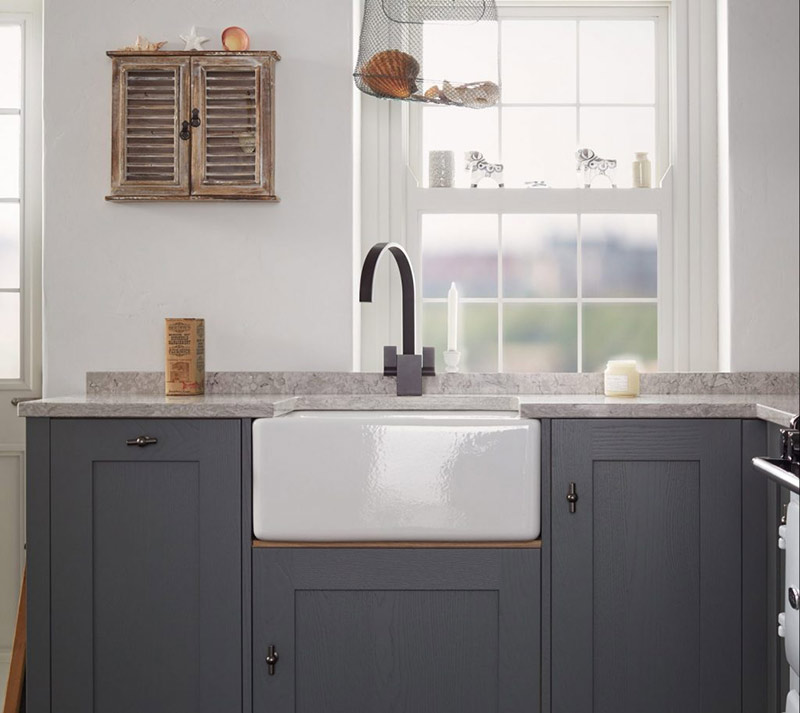
“Our larger sinks, including double bowls and the Belfast models commonly associated with country-style properties, have been very popular during the latter half of 2020,” comments Leanne Adamson, Marketing Manager for Abode.
“It’s having an impact on material choice too, with ceramic and composite sinks being particularly popular among consumers fitting kitchens in more rural settings.
“Older properties not only tend to have larger kitchens than modern city apartments, but people moving from town to country also have larger plots of land so the potential to extend is greater too. Overall, more space is now being found for the kitchen and for one of the most important fixtures within it; the sink,” she adds.
With 30% of 18-34-year olds now interested in living in a rural area and employers becoming more flexible about remote working, this ‘urban exodus’ looks set to continue, with the trend for bigger kitchen sinks set to grow and grow as a consequence.
What does this all mean for retailers?
The implications for retailers and designers are that they are perhaps going to have to start thinking differently about design and alter their approach so that it’s more in line with these new possibilities. If you’re a retailer that knows nothing about home office furniture, now might be the time to get to know.
And if you just love knocking walls down and creating beautiful and vast open plan living spaces, it might be time to hide the sledgehammer and have a rethink.
There are a couple of mainstream kitchen and bedroom brands – Crown Imperial and Hepplewhite – which are focusing, with renewed vigour, on their home office ranges, in recognition of growing demand.
Crown Imperial offers flexible home office and storage solutions in the form of its Lifespace collection. It comprises a range of desks, drawers, bi-fold cabinets and more, in a variety of styles and colours.
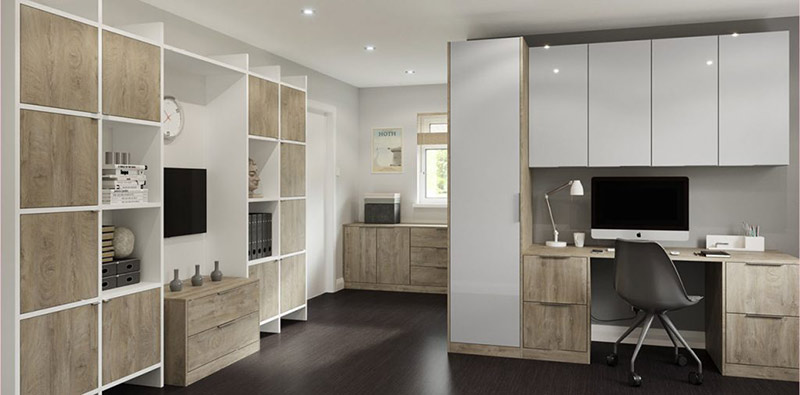
Hepplewhite is in the process of changing its offering so that it better integrates with the company’s existing bedroom furniture range. Mick Sumner, trade sales support manager comments: “We are seeing an increase in homeowners wanting to use their domestic spaces more flexibly. Most people don’t have the space for a standalone home office so instead are creating multifunctional spaces which can serve many different functions. So, often the home office will be situated in a spare bedroom. We also commonly find homeowners making use of the space under the stairs for an office space, or even utility rooms transformed into offices.”
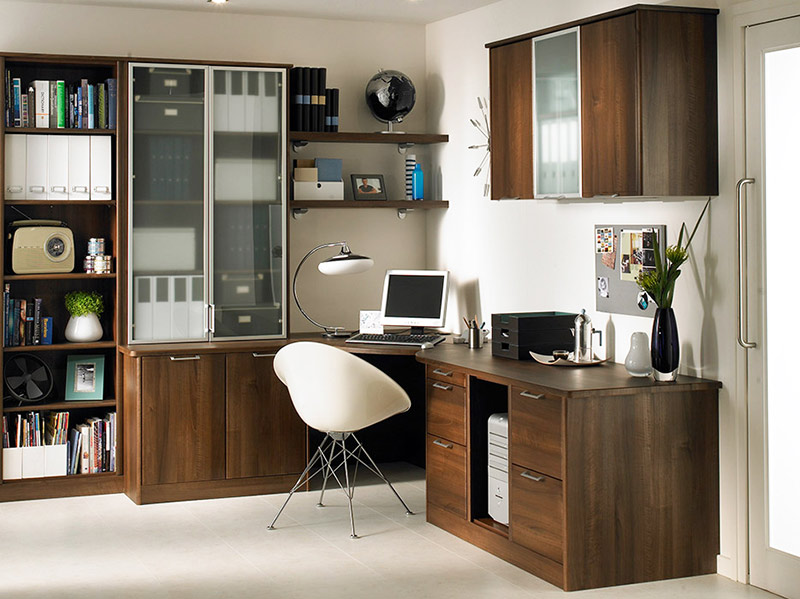
Bringing it life in CAD designs
Of course, if you plan to design a home office or want to simply design and create more flexibly, you’ll need to have CAD software that easily facilitates this. Using Winner, our customers can create beautiful and functional home office spaces from Crown LifeSpace or Hepplewhite as all catalogues for each of those brands are available within the software.
Simon Nairn runs Kitchen Culture in Cambridgeshire and his company supplies Crown Imperial kitchens and fitted office furniture. He comments: “Drawing an office set up is very simple on Winner. We use Crown Imperial Lifespace furniture, but often combined with their kitchen or bedroom furniture catalogue. You can move between them and add items from multiple ranges. It really couldn’t be easier.”
With Winner Design it’s also easy to create your own designs, without using the available presets or catalogue items.
Nairn adds: “We are lucky to have a good range of furniture options but sometimes we do have to create something off-catalogue. The software allows for that but it really is on only the odd occasion. It normally links to open shelves or a tricky alcove and maximising storage.”
Louise McGaffigan, director of sales and marketing at Cooper Bespoke Joinery/Frank Anthony Kitchens, continues: “We find our customers usually like to incorporate working space in either a dedicated office or on a large kitchen island. There has definitely been more of a demand for a “working space to feature”, as we have experience of using Winner to design our bespoke hand-built kitchens, this has not proved difficult.”
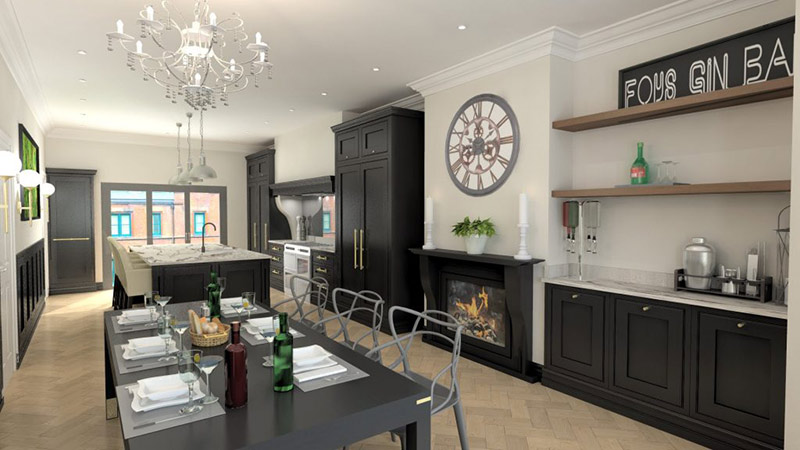
Hepplewhite retailer Chris Byle, who is managing director at Byles Ltd notes that they’ve had an increasing number of customers looking for areas that can be adapted to home schooling or the ability to “work at home”. Their demands are varied with some needing more worksurface, some storage solutions, and others a quiet space with few distractions, he says.
Byle adds: “The current pandemic has highlighted a change in the way people view the work/life balance with an increasing number moving out of city centres to more rural settings, working mainly from home a few days a week and only going into the office for essential meetings. I have a few customers who are looking for changes at home to create more of an office area, but also one that can be used for more of a recreational area when not at work. In this respect the ability to adapt any standard unit using the Compusoft software to suit a customer’s needs is a very useful tool and helps illustrate to the customer how the finished article could look.”
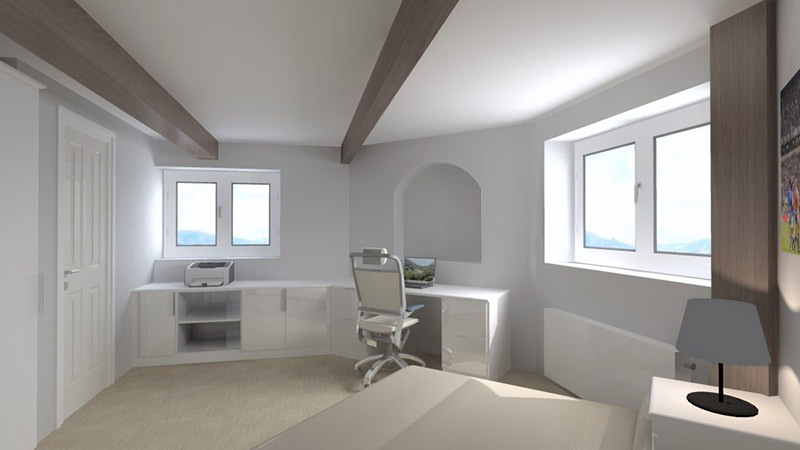
Conclusion
Although there are some compelling theories around changes in design, which certainly offer some food for thought, the idea that design is going to change significantly as a consequence of the pandemic is not set in stone. And while some retailers have reported an increase in customers looking for design solutions that can facilitate working from home, others haven’t, and it might be that any shifts in design might happen further in the future.
What is more apparent, and what perhaps should be taken away from this blog, is that flexibility of design is important. And agility and flexibility as a designer/retailer is crucial if you want to move with the times and not get left behind.

